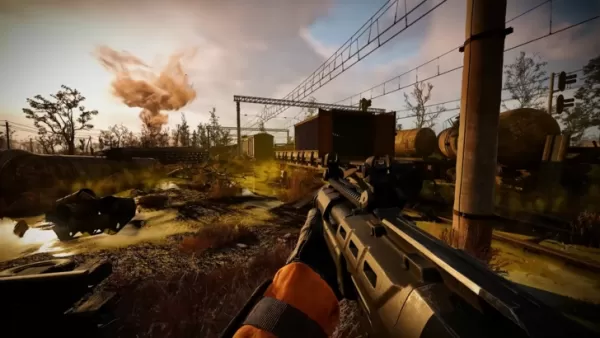Every couple of years, Nvidia launches an extremely expensive, yet incredibly powerful graphics card that propels PC gaming into a new era. The Nvidia GeForce RTX 5090 is one such card, but its approach to next-generation performance is unconventional. In many games, the performance increase over the RTX 4090 isn't as dramatic as one might expect, particularly when DLSS Frame Generation is not considered. However, with the next iteration of Nvidia’s DLSS technology for both upscaling and frame generation, we witness substantial leaps in image quality and performance that surpass typical generational advancements.
The extent to which the Nvidia RTX 5090 represents an upgrade for you hinges on the games you play, the resolution at which you play them, and your comfort with AI-generated frames. For most gamers using displays below a 4K resolution with a 240Hz refresh rate, this upgrade may not be justified. However, if you own a high-end display, the AI-generated frames will provide a glimpse into the future of gaming.
Nvidia GeForce RTX 5090 – Photos

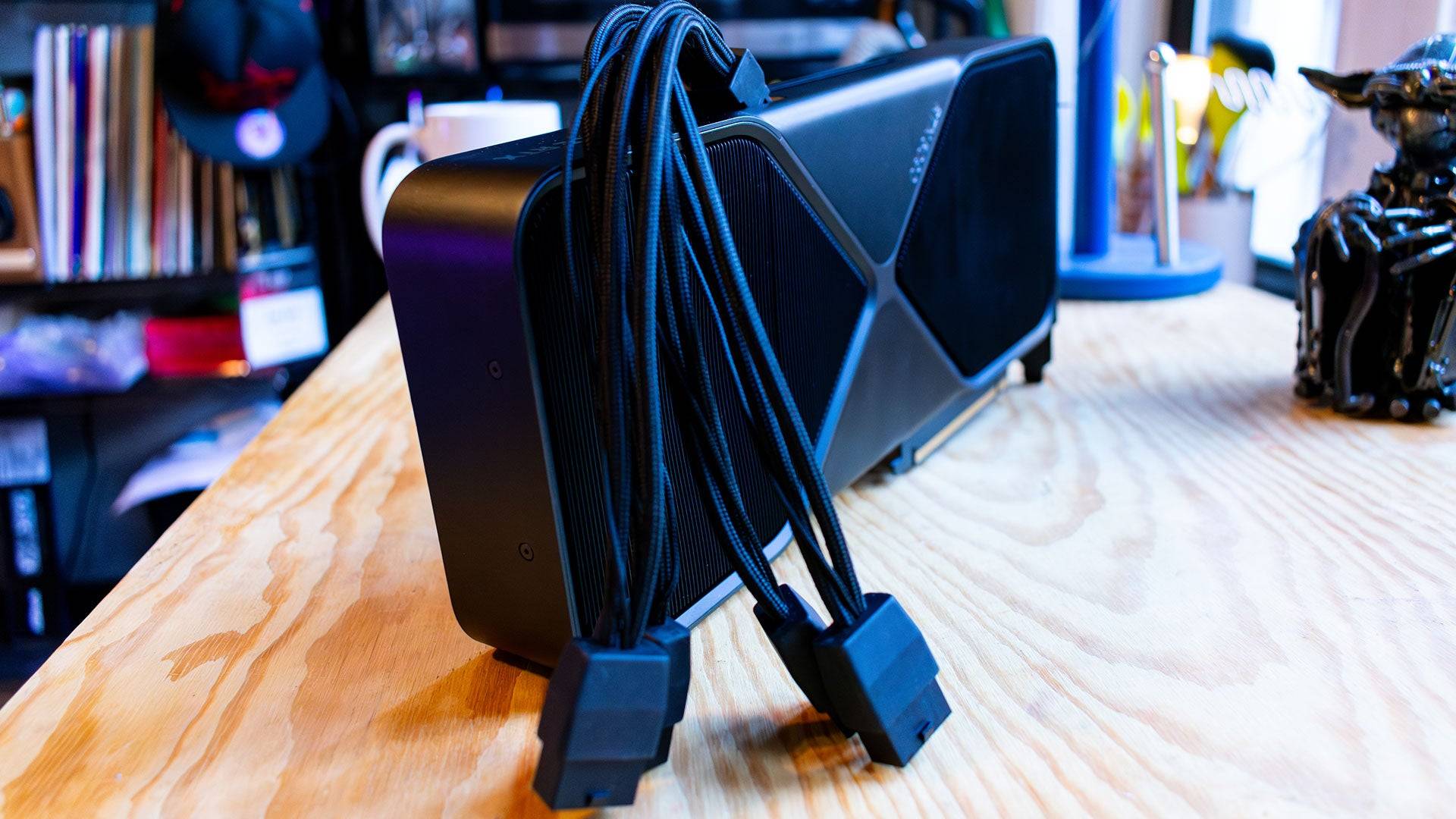 5 Images
5 Images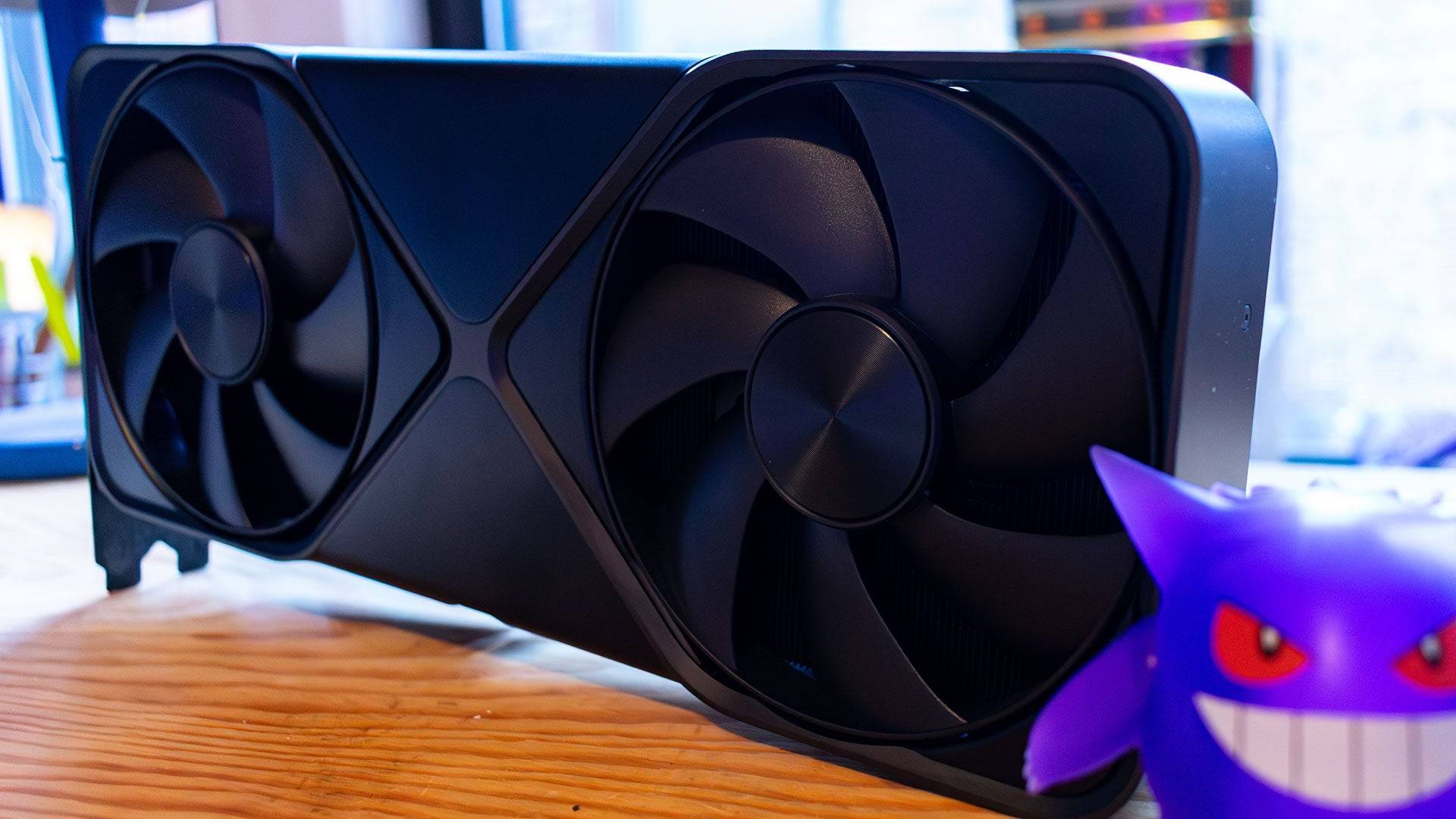

 RTX 5090 – Specs and Features
RTX 5090 – Specs and Features
The Nvidia GeForce RTX 5090 is built on the Blackwell architecture, which powers high-end data centers and supercomputers driving many popular AI models. This indicates the RTX 5090's prowess in AI applications, but Nvidia has also focused on enhancing traditional gaming performance.
The RTX 5090 boasts an increase in Streaming Multiprocessors (SMs) within the same Graphics Processing Clusters (GPCs), resulting in 21,760 CUDA cores, a 32% increase from the RTX 4090's 16,384 cores. This significantly boosts raw gaming performance. Each SM is equipped with four Tensor Cores and one RT Core, totaling 680 Tensor Cores and 170 RT Cores, compared to 512 and 128, respectively, in the RTX 4090. The 5th-generation Tensor Cores enhance AI performance, now supporting FP4 operations to reduce VRAM dependency.
 This powerful silicon is paired with 32GB of GDDR7 VRAM, a significant upgrade from the GDDR6X in the RTX 4090, offering increased speed and power efficiency. Despite this, the RTX 5090 demands 575W of power, a substantial increase from the RTX 4090's 450W, highlighting Nvidia's focus on performance over power efficiency.
This powerful silicon is paired with 32GB of GDDR7 VRAM, a significant upgrade from the GDDR6X in the RTX 4090, offering increased speed and power efficiency. Despite this, the RTX 5090 demands 575W of power, a substantial increase from the RTX 4090's 450W, highlighting Nvidia's focus on performance over power efficiency.
Nvidia has revamped the DLSS algorithm to operate on a Transformer Neural Network (TNN) instead of a Convolutional Neural Network (CNN), promising improved image quality and reduced issues like ghosting. Additionally, the RTX 5090 introduces Multi-Frame Generation, an advanced version of the Frame Gen technology from the RTX 4090, capable of generating multiple frames from each rendered image to significantly enhance frame rates.
Purchasing Guide
The Nvidia GeForce RTX 5090 will be available starting January 30, with a starting price of $1,999 for the Founders Edition. Be aware that third-party versions may be priced significantly higher.
The Founders Edition
Requiring 575W of power, the RTX 5090 necessitates robust cooling solutions. Surprisingly, Nvidia has managed to house this power within a dual-slot chassis using a dual-fan configuration. During extensive testing, the card's temperature peaked at 86°C, slightly higher than the RTX 4090's 80°C, yet still within safe operational limits.
 Nvidia achieved this by redesigning the PCB to a compact square, centrally located within the card, with fans on either side and a heatsink running the card's width. This design facilitates efficient air intake from the bottom and exhaust through the top, eliminating the need for rear vents under the output ports.
Nvidia achieved this by redesigning the PCB to a compact square, centrally located within the card, with fans on either side and a heatsink running the card's width. This design facilitates efficient air intake from the bottom and exhaust through the top, eliminating the need for rear vents under the output ports.
The RTX 5090 Founders Edition retains the aesthetic lineage of its predecessors, featuring a silver 'X' design and a gunmetal-gray chassis with black heatsinks. A 'GeForce RTX' logo with white LEDs adds a touch of elegance. The card employs a new 12V-2x6 power connector, slightly more efficient than the previous generation, and includes an adapter for four 8-pin PCIe power connectors. The angled power connector on the card improves ease of installation and appears more secure.
This design also allows the RTX 5090 to fit into smaller PC builds, unlike the larger RTX 4090 and RTX 3090, though third-party designs might be larger.
DLSS 4: Fake Frames?
Nvidia claims the RTX 5090 can boost performance by up to 8x, though the actual increase is less, primarily achieved through AI-generated frames rather than traditional rendering. DLSS 4 introduces 'Multi-Frame Generation,' an evolution of the technology introduced with DLSS 3 and the RTX 4090. This is facilitated by a new AI Management Processor (AMP) core, which efficiently assigns tasks across the GPU, traditionally handled by the CPU.
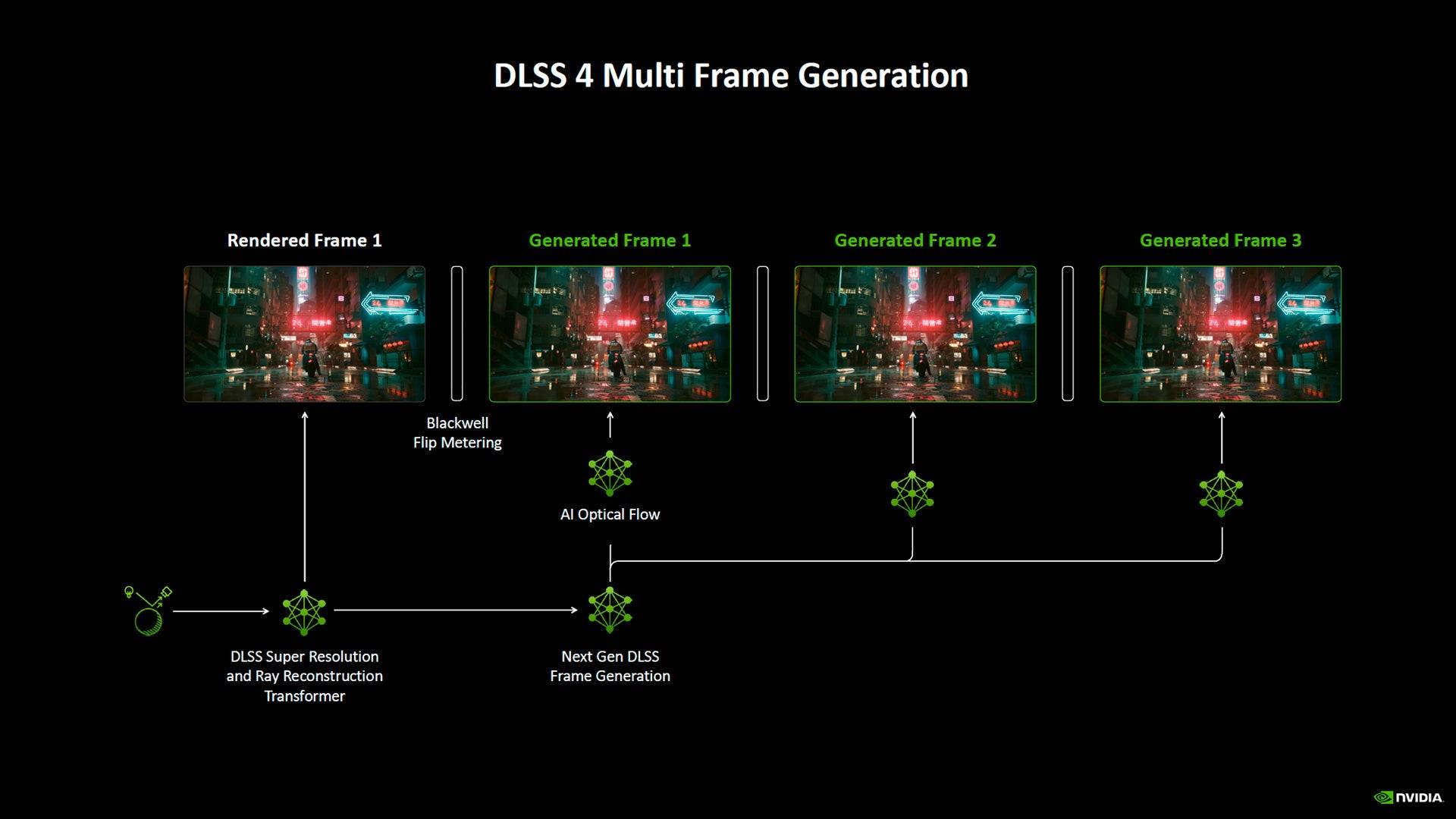
Upon its January 30 release, DLSS 4 will be supported in numerous PC games that already support DLSS 3 Frame Generation. During testing, Cyberpunk 2077 and Star Wars Outlaws demonstrated impressive results. In Cyberpunk 2077 at 4K on the Ray Tracing Overdrive Preset with DLSS in Performance mode, the RTX 5090 achieved 94 fps, which increased to 162 fps with 2x frame generation and soared to 286 fps with 4x frame generation. Similarly, Star Wars Outlaws at 4K with max settings reached up to 300 fps with DLSS 4, compared to 120 fps without frame generation.
While some might dismiss these as 'Fake Frames,' they offer tangible benefits for gamers with high-refresh, high-resolution displays. Nvidia anticipates 75 games will support DLSS 4 at launch, though performance may vary.
RTX 5090 – Performance
The Nvidia GeForce RTX 5090 is exceptionally powerful, but its real-world performance varies. In 3DMark, it shows a 42% improvement over the RTX 4090, but in actual games, CPU bottlenecks limit its potential, even with a high-end CPU like the Ryzen 7 9800X3D. This makes the RTX 5090 a future-proof investment rather than an immediate necessity for those with existing high-end GPUs.
All benchmarks were conducted without DLSS 4, using public drivers available at the time.
Test SystemCPUAMD Ryzen 7 9800X3DMotherboardAsus ROG Crosshair X870E HeroRAM32GB G.Skill Trident Z5 Neo @ 6,000MHzSSD4TB Samsung 990 ProCPU CoolerAsus ROG Ryujin III 360In 3DMark, the RTX 5090 scores 14,399 points in Speed Way, compared to 10,130 for the RTX 4090, and 36,946 points in Port Royal, against the 4090's 25,997. This represents a significant leap, especially for those upgrading from the RTX 3090.
In gaming scenarios, however, results are less uniform. In Call of Duty Black Ops 6 at 4K with Extreme settings and DLSS on Performance, the RTX 5090 achieves 161 fps, a modest 10% increase over the RTX 4090's 146 fps. Cyberpunk 2077 at 4K with Ray Tracing Ultra and DLSS in Performance mode sees the RTX 5090 at 125 fps, again a 10% increase over the 4090's 112 fps. Metro Exodus: Enhanced Edition at 4K with the Extreme preset yields 95 fps for the RTX 5090, a 25% improvement over the 4090's 76 fps.
Red Dead Redemption 2 at 4K with maxed settings and DLSS on Performance mode shows the RTX 5090 at 167 fps, a mere 6% increase over the 4090's 151 fps. Total War: Warhammer 3, without ray tracing or upscaling, delivers 147 fps for the RTX 5090, a 35% uplift over the 4090's 107 fps. Assassins Creed Mirage presented inconsistent results, likely due to a driver issue.
Nvidia GeForce RTX 5090 – Benchmarks
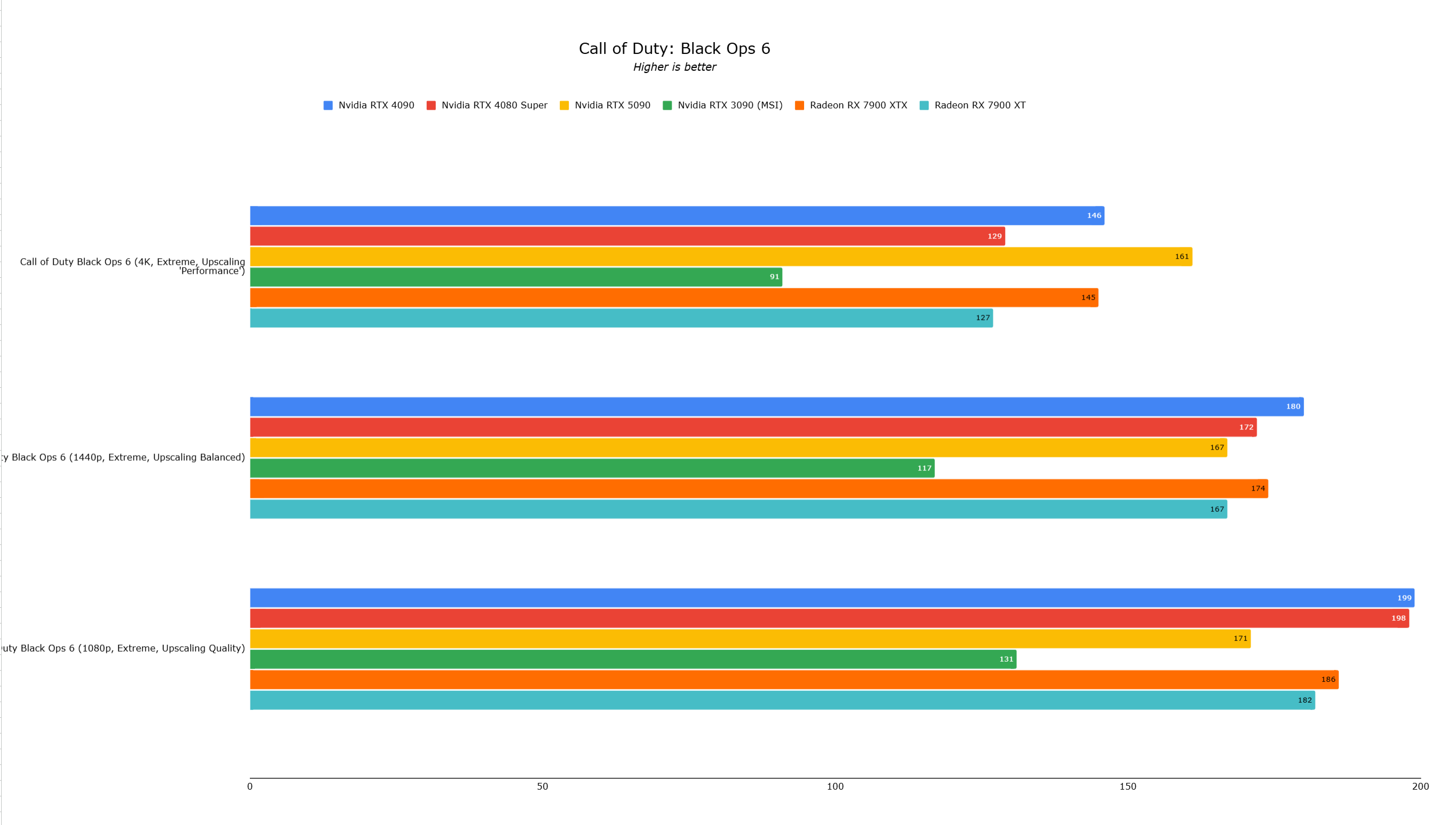
 14 Images
14 Images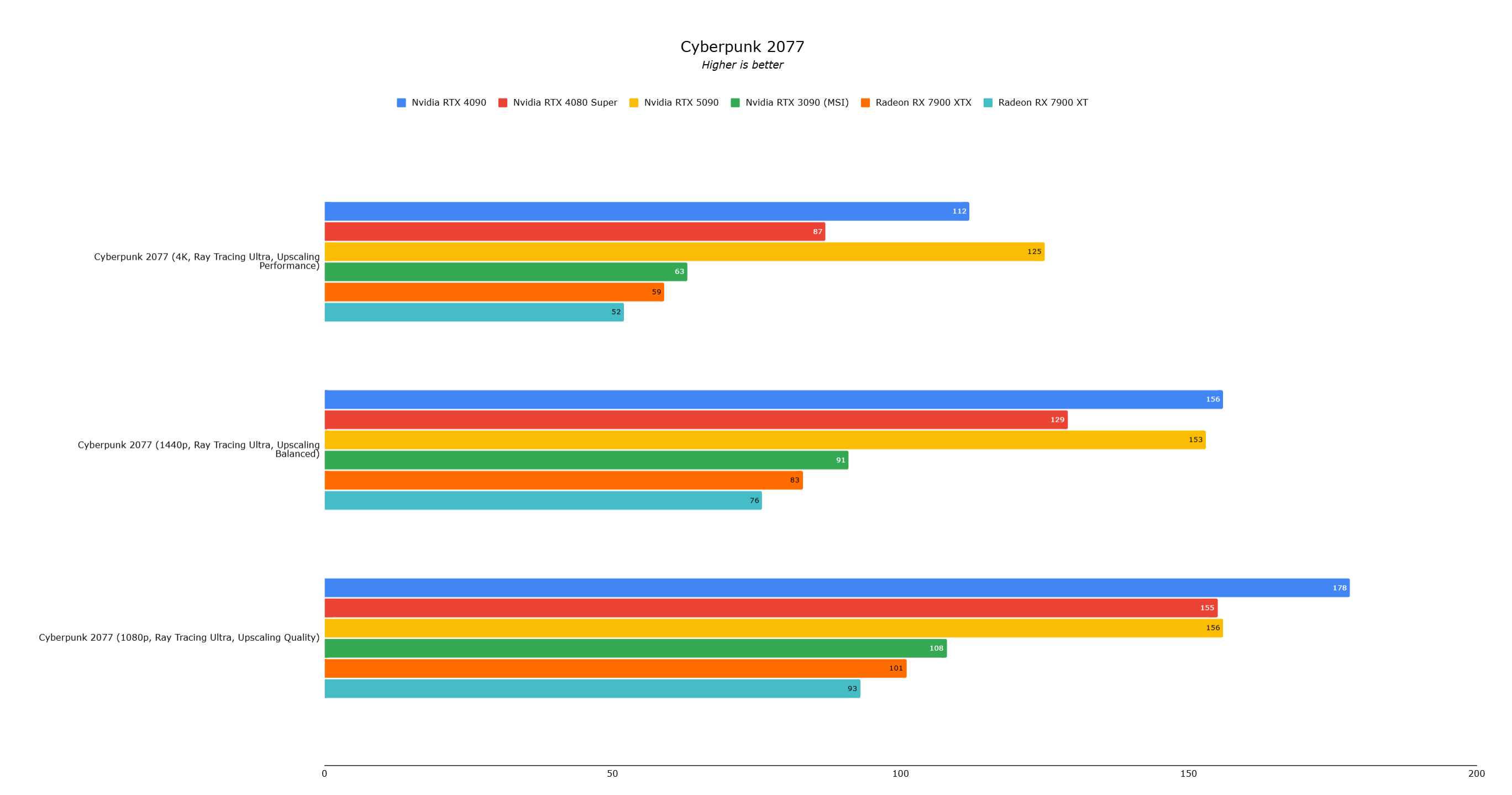
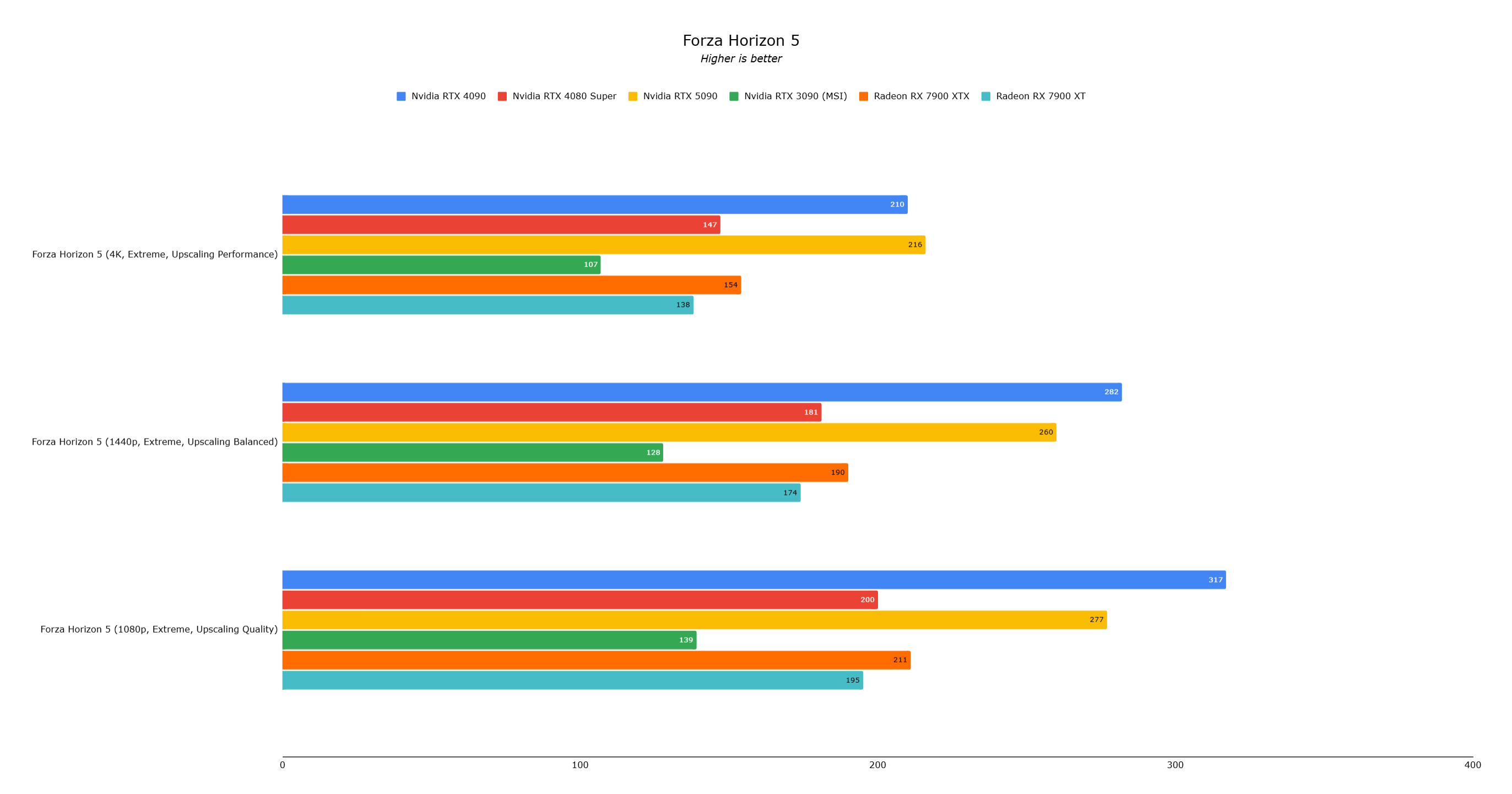
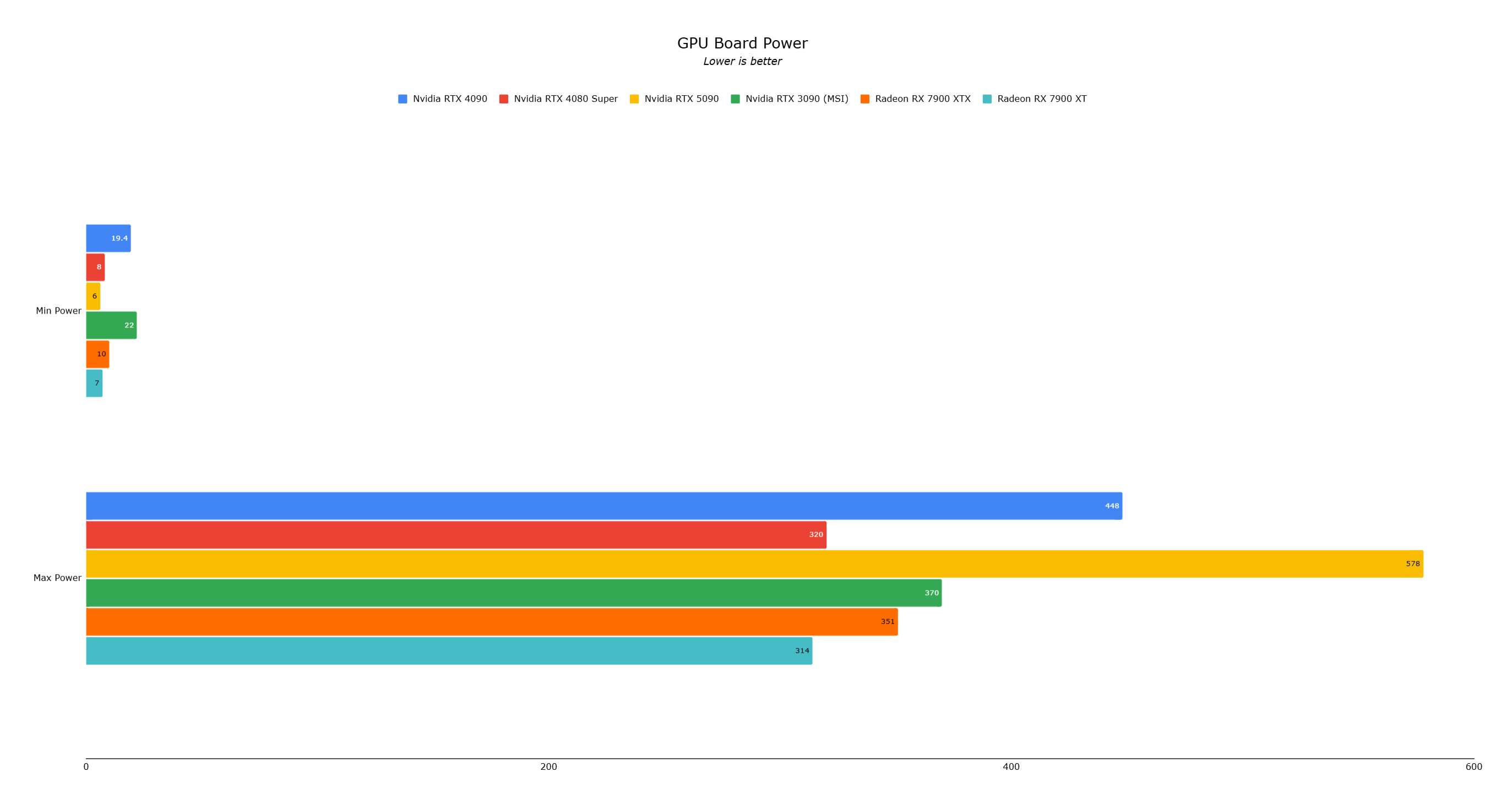
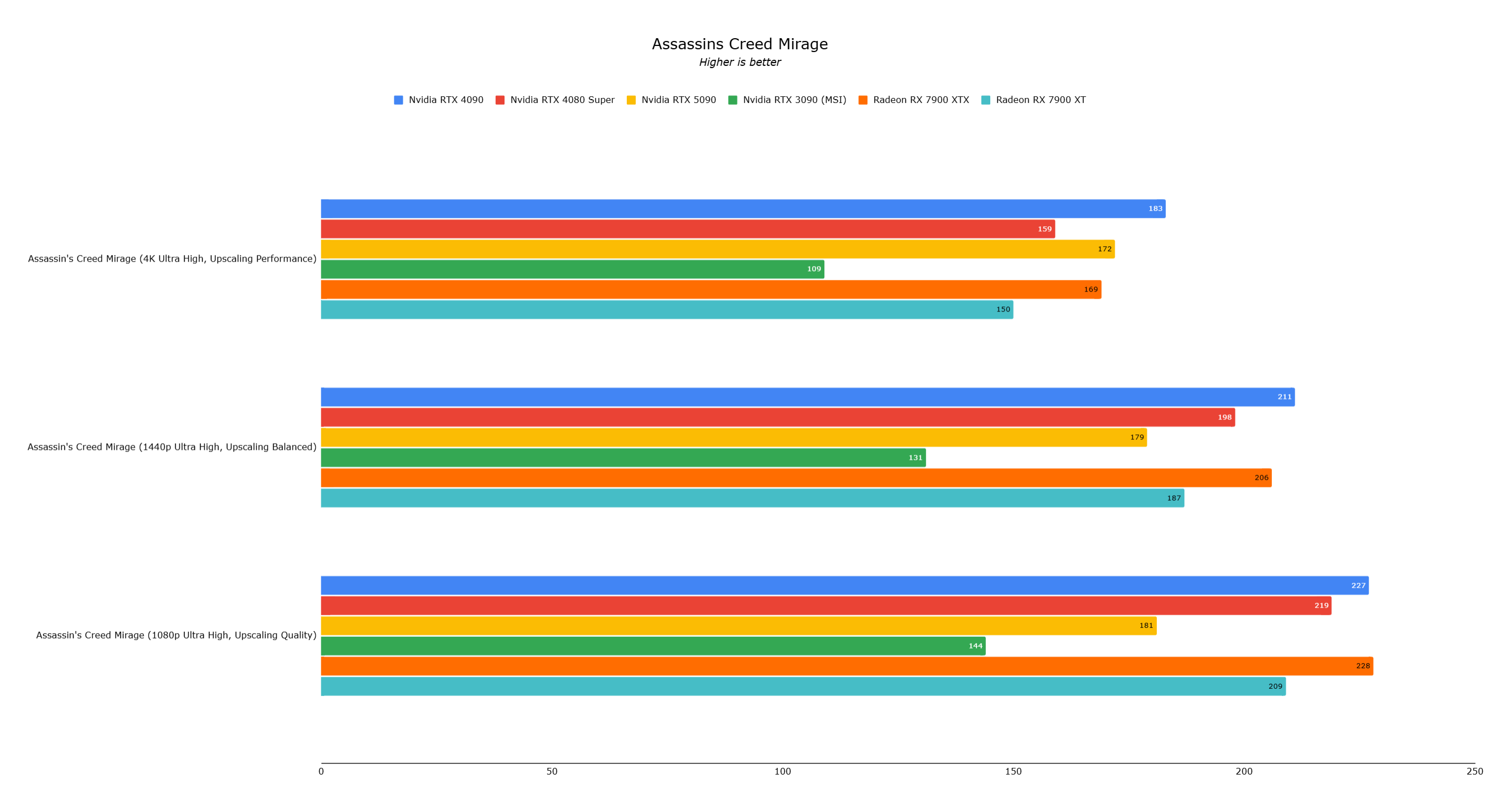 Black Myth: Wukong at 4K with the Cinematic Preset and DLSS at 40% sees the RTX 5090 at 104 fps, a 20% improvement over the 4090's 84 fps. Forza Horizon 5 at 4K shows virtually no difference between the RTX 5090 and RTX 4090, both hovering around 210 fps.
Black Myth: Wukong at 4K with the Cinematic Preset and DLSS at 40% sees the RTX 5090 at 104 fps, a 20% improvement over the 4090's 84 fps. Forza Horizon 5 at 4K shows virtually no difference between the RTX 5090 and RTX 4090, both hovering around 210 fps.
Nvidia's claim that Moore's Law is dead suggests that future GPUs may not offer significant generational leaps, and the RTX 5090's performance in current games supports this. Nevertheless, the RTX 5090 is the fastest consumer graphics card available, though its full potential will likely be realized in future games that can leverage its power.
The RTX 5090 is best suited for enthusiasts eager to embrace AI-powered gaming, willing to invest $1,999 or more in this future. For others, the RTX 4090 remains a powerful and sufficient choice for the foreseeable future.


